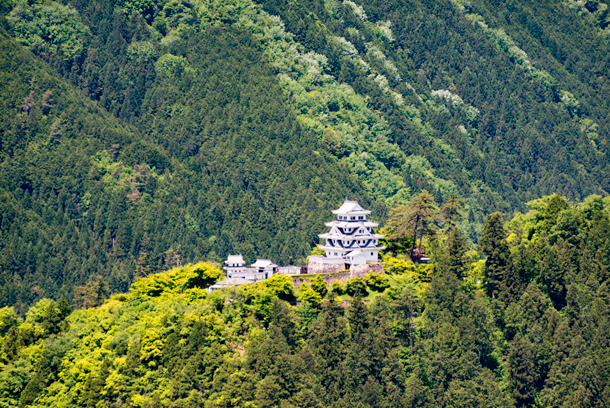
Gujo Hachiman is first and foremost a castle town. Gujo Hachiman castle has played a significant role in the town's history, and its fortunes over the past five hundred years.
The presence of a castle, and local feudal lord, made Gujo Hachiman a local centre of finance, politics and trade. This contributed significantly to the wealth of the town's inhabitants, and in turn attracted artists, craftsmen, and others of note to visit, and in some cases stay.
At the end of the Edo period, Lord Aoyama came to Gujo Hachiman from Kyoto. He brought with him many traditions, customs and practices, including culture and architecture, from what was and still is the cultural heart of Japan. You can still hear a little bit of Kyoto today, such as when locals use "okini" to say thank-you instead of "arigato"; and you can still get a taste 17th century Kyoto if you buy some "nikke dama", hard cinnamon candies made locally and sold in different stores around town.
![]() = Gujo Hachiman Castle
= Gujo Hachiman Castle ![]() = Kazutoyo and his wife Chiyo statue
= Kazutoyo and his wife Chiyo statue![]() = Information
= Information
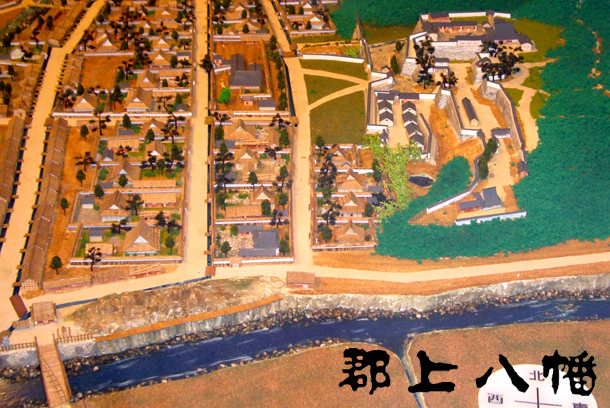
A diorama of the original town founded north of the Yoshida River and around Gujo Hachiman Castle.
Gujo Hachiman was founded in the 16th century by Endo Morikazu. Located almost due north of Nagoya, Gujo Hachiman is situated at both the geographic centre and the traditional heart of Japan in a small mountain valley next to the Nagara River. Here, two fast running rivers, both tributaries of the Nagara River, create a natural moat around an area at the foot of a small mountain - known locally as Shiroyama or castle mountain. Over time, a small town blossomed and grew in this protected area below the castle.
In the Edo period Gujo Hachiman was a major stopover for travellers on the main route that followed the Nagara River from Nagoya to the Sea of Japan, and to other important castle towns such as Hida Takayama. This location, together with the castle, helped to attract craftsmen, artists, merchants and others to the town, and contributed to the cultural richness that continues today.
In modern times, Gujo Hachiman's "off the beaten path" location, nestled in the surrounding mountains, has helped to preserve many traditional ways of living. This includes indigo dyeing, Gujo Tsumugi silk weaving and dyeing, and playing host to one of the three most important traditional bon dance festivals in Japan.
Visitors to this small mountain town have an opportunity to experience the town's colourful history and traditions which are still very much alive and celebrated today. Much as in the old days, refreshed and revitalized travellers can easily continue on their travels to Hida Takayama, UNESCO World Heritage site Shirakawa Go, and even Kanazawa on the Sea of Japan coast.
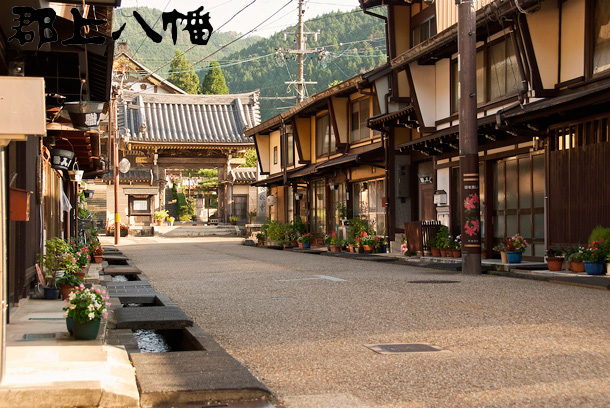
In 1652 Gujo Hachiman was completely destroyed by fire. When rebuilt in 1660 by Endo Tsunetomo, an ingenious network of small waterways connected to the surrounding rivers was built throughout the town to safeguard it from fire. For centuries, people in the town have used these waterways in their daily lives for washing everything from vegetables to be used for winter pickles, to rinsing household laundry; activities which can still be seen today.
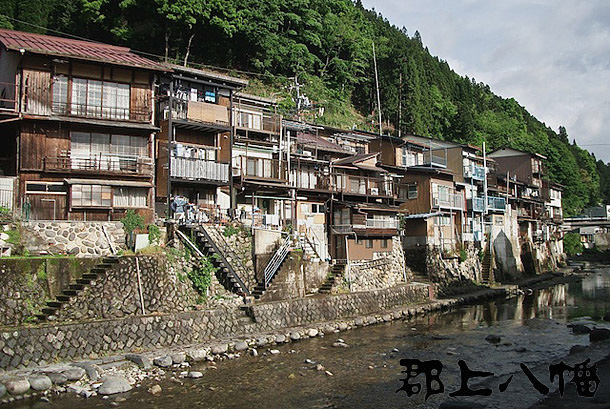
Houses built along the west side of the Kodara River
Since the town's founding, water has, and continues to play, an important role in the life of the town and its people. Water's first role was not shipping or manufacturing, but defence. The Kodara and Yoshida rivers are not navigable by commercial vessel. Instead they form a natural moat around the town, and in the Edo period they provided a formidable defensive barrier around the castle and town. Water's second role was, and continues to be, to provide protection against fire, and water for household use.
Today as you walk throughout the town you hear and see water in the rivers, and rushing through the small streetside waterways. Present day reminders of the town's heritage, and a testament to its resilience and will to survive.
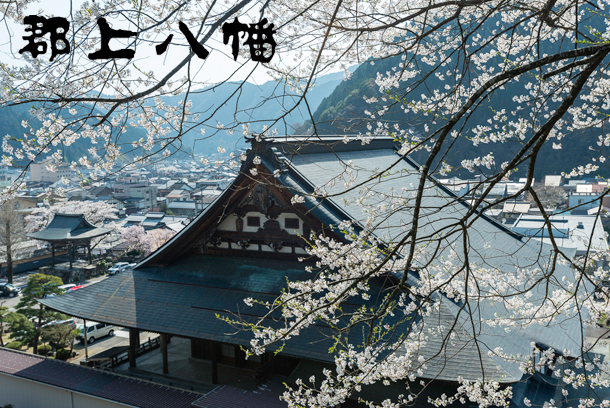
A view of the roof on An Yo Ji temple
Gujo Hachiman is home to a large number of temples and shrines, all constructed when the town was rebuilt in 1660. In all, you will find 4 shrines and 13 temples to visit, earning Gujo Hachiman the nickname "little Kyoto". Visitors will also notice many homes built in the Kyoto style - narrow and deep - lining the streets of historic areas.
Historically, temples and shrines apart from serving a religious and spiritual purpose, also served a military purpose in the defense of the town. They were placed strategically throughout the town to provide maximum protection for the castle, and served a role similar to a barracks.
Observant visitors may notice that temples and shrines in Gujo Hachiman are typically placed at the end of a long straight street to give the outsider the impression that the street ends at the temple and that there is no escape. However, there is always a small narrow street that leads off the main street and away from the temple.
Visit us in person:
Kinenkan Tourism Centre
501-4222
520-1, Shimadani,
Hachiman Cho,
Gujo Shi, Gifu ken,
Japan
Hours:
9:00 am - 5:00 pm daily
9:00 am - 6:00 pm during Gujo Odori season
Phone: 0575 67-0002